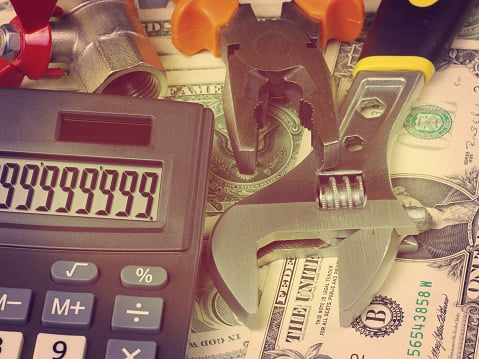 So, your homeowners association is contemplating doing a reserve fund study. Perhaps you are a new HOA and need to establish and start funding the reserves; or, you are an older HOA that has had a reserve for years, but it is time to update it. How many years should your HOA reserve study cover?
So, your homeowners association is contemplating doing a reserve fund study. Perhaps you are a new HOA and need to establish and start funding the reserves; or, you are an older HOA that has had a reserve for years, but it is time to update it. How many years should your HOA reserve study cover?
Well, it depends. HOA communities vary in size, age and the number and dollar value of the capital assets they own. They choose different maintenance strategies for short-lived and longer-lived capital assets. Let’s explore some of these issues.
First, do not confuse reserve funds with emergency or contingency funds set aside for expenses not foreseen in the operating budget. Reserve funds are for repairing, replacing, restoring or maintaining items from a pre-determined list of capital assets and only those assets.
HOAs have two approaches to maintenance: reactive and proactive. Reactive means repairing, replacing or restoring a capital asset when it is no longer functional or safe. The expense can be drawn from the reserve fund because you are replacing a capital asset or you are repairing it to extend its useful life. Proactive means having a maintenance schedule to insure preventive maintenance is done regularly. Everyday maintenance (changing the oil in an HOA vehicle) should be in the operating budget. A major refurbishment that will extend the useful life of a capital asset can be paid for from reserve funds.
The foundation of a reserve study is what capital assets the HOA maintains. A small HOA may have assets of only 5-10 years of useful life; for example, a simple common area with some playground equipment. Your reserve study needs cover only 5-10 years. A larger HOA may have major capital assets like vehicles, buildings and recreation facilities with long useful lives of 20-30 years. Your reserve study must extend over 20-30 years. Section 5550 of California’s Davis-Sterling Act requires that any asset having a remaining useful life of less than 30 years be included in your reserve study.
According to the National Reserve Study Standards, a capital asset should be included in your reserve study if it meets all four of the following criteria:
- The capital asset is owned by the HOA; it is not the private property of an individual member. Example: individual decks may be defined as an HOA asset or as the property of the unit owner.
- The capital asset has a limited useful life (UL). Pool furniture and the swimming pool have limited useful lives. Shade trees have finite lives – they will die some day – but when is unknown.
- The capital asset has a predictable remaining useful life (RUL). The swimming pool has a limited life of 20 years and it is 10 years old; its predictable RUL is 10 years.
- The capital asset has a replacement cost above a minimum, typically 0.5 to 1.0 percent of the HOA’s annual budget. Replacing anything that costs less should be covered by the operating budget.
In developing your capital asset list, watch for two mistakes:
- The capital asset list is incorrect.
- The UL and/or the RUL are wrong.
Following the four-part test protects you from including too many small items. Be careful to not overlook items that should be included; example: an HOA prepared its asset list only to discover they had overlooked their exterior lighting.
Sometimes, HOA boards are tempted to extend the UL or the RUL of capital assets to reduce the annual cost of contributions to the reserve fund. This risks having to repair/replace those assets before enough money is reserved for that expense, creating the need for a special assessment. Conversely, under-estimating a UL or RUL can result in over-funding the reserves, sometimes extravagantly.
Whatever you do, explain the reserve fund to your members so they don’t question having large sums of money set aside for long periods of time. For help managing the complexities of your HOA contact us at 530-419-6032 or toll free: 1-888-304-4674, or complete the online form.
Let us provide you with an evaluation of your HOA reserve study. The Hignell Companies have assisted HOA and condominium boards to manage their communities effectively for over 30 years. We serve over 40 communities, from the small (40 units) to the very large (2000+ units) throughout Northern California. We are headquartered in Chico with additional offices in Redding and Sacramento.
Additional Resources
Top 7 Considerations for Planning Your HOA Reserve Funds
The California Reserve Study Guidelines
California’s Operating Cost Manual for Homeowners Associations
The Community Associations Institute’s National Reserve Study Standards
*The four-part test is under the definition of Component, the term CAI uses for a capital asset.









